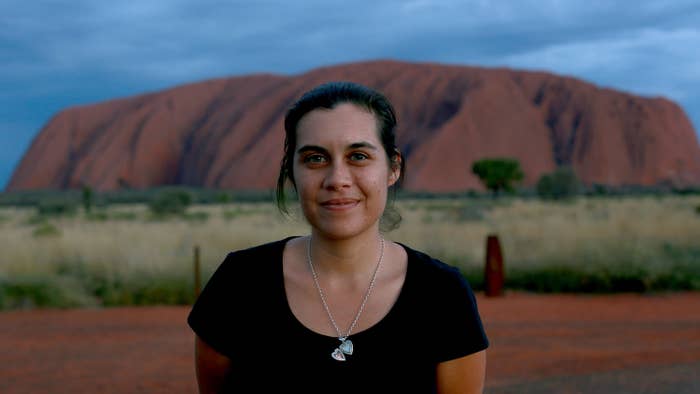
Amazingly, in 2018, many young non-indigenous Australians still have very little understanding of the historical and contemporary realities faced by the traditional owners of this land. In this three-part documentary series, BuzzFeed’s Indigenous affairs reporter Amy McQuire goes on a journey through the past, present, and future of this land to meet community leaders around Australia. Her mission? To explain where we’re at, address unfinished business, and hypothesise about a better future.
Part 1: Sovereignty | Darumbal Country, Rockhampton QLD
In Central Queensland, near Rockhampton, Gai-ee stands aloft Darumbal country. For decades Gai-ee was known as Mount Wheeler, but in 2007, after years of lobbying, the mountain was given its name back. It was a small gesture, followed up in 2016 with the confirmation of Native Title for the Darumbal tribe after a near two-decade legal battle to be acknowledged as the traditional owners of the land, rivers, and mountains in Marlborough, Yeppoon, and Rockhampton.
Around Queensland, from Gai-ee to K’gari — formerly Fraser Island — a renaming is taking place. It shows, if in a modest way, that governments can address and start to heal the wounds of the past, dealing with unfinished business and charting Australia to a new, more honest future. But as a country we have much to reckon with.
Part 2: Survival | Anangu Country, Uluru NT
The first peoples of Australia are pariahs on the periphery of Uluru, the Red Centre’s global icon.
“There is a company making money off a UNESCO-listed natural living landscape, and 26km away there is a living culture that’s dying,” says Ngaanyatjarra Aboriginal Corporation chair Rameth Thomas.
In 2017, the Anangu people decided that rather than waiting for white climbers to accept their wishes — for years they had made it known that traversing over their sacred site was inappropriate – they would take their own step toward “righting a historic wrong”, and have set a date after which Uluru will be closed to climbers.
As Indigenous Australians struggle to survive after 230 years of devastation, it was a powerful symbol of what can happen when First Nations people take matters into their own hands and push for change, rather than waiting and expecting it to happen.
Part 3: Invasion | Noongar Country, Rottnest Island WA
Western Australia's Rottnest Island, off the Fremantle coast, is known for its cute quokkas and beautiful white sand beaches. To Indigenous Australians, it is Wadjemup.
For decades, weekenders from the mainland camped at Tent Land, unaware that they were sleeping on the unmarked graves of at least 373 Aboriginal men who died in the island's prison. It is the biggest known mass grave in Australia.
Today, locals and tourists continue to do so, despite the fact that the story of the mass grave has been uncovered and shared.
Why does Australia suffer from historical amnesia, so indifferent to the horror, harm, and pain of decades past? Scholars estimate that every Western Australian Aboriginal person alive today has an ancestor who was imprisoned on Wadjemup. This is where thousands of Aboriginal men were sent to live in shackles.
In the final episode of What They Don’t Teach You, we learn the story of Rottnest/Wadjemup, a sacred island to the Noongar that first became a prison and then a playground. The men imprisoned on Wadjemup were traditional lawmen (keepers of timeless cultural knowledge and social norms), warriors, and leaders of their people. There are stories of men and boys being taken, but few about them returning.



